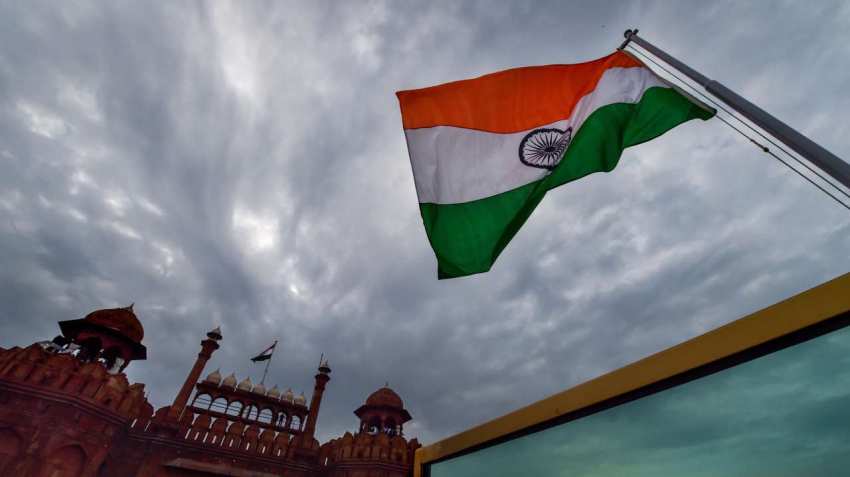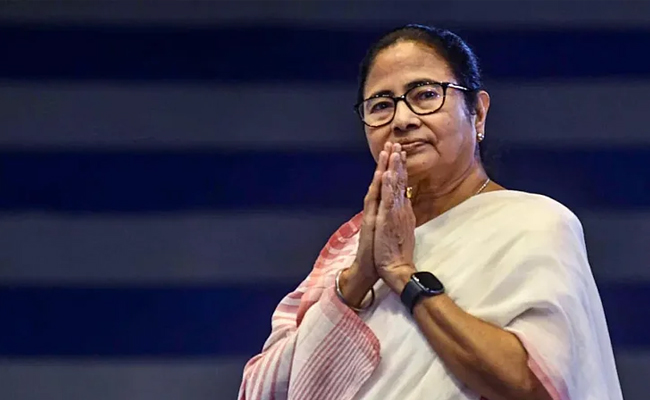United Nations: India has the largest diaspora population in the world with 18 million people from the country living outside their homeland in 2020, according to a report by the United Nations, which says the UAE, the US and Saudi Arabia host the largest number of migrants from India.
The report 'International Migration 2020 Highlights', by the Population Division of the UN Department of Economic and Social Affairs (UN DESA) released on Friday, said the spatial distribution of transnational populations varies greatly and India's diaspora, the largest in the world, is distributed across a number of major countries of destination.
In 2020, 18 million persons from India were living outside their country of birth. Other countries with a large diaspora population included Mexico and Russia (11 million each), China (10 million) and Syria (8 million).
India's large diaspora is distributed across the United Arab Emirates (3.5 million), the United States of America (2.7 million) and Saudi Arabia (2.5 million). Other countries hosting large numbers of Indian migrants included Australia, Canada, Kuwait, Oman, Pakistan, Qatar and the United Kingdom, the report said.
China and Russia also have spatially diffused diasporas.
Between 2000 and 2020, the size of the migrant population abroad grew for nearly all countries and areas of the world.
India experienced the largest gain during that period at nearly 10 million, followed in order of magnitude by Syria, Venezuela, China and the Philippines.
The US remained by far the largest country of destination of international migrants with 51 million migrants in 2020, equal to 18 per cent of the world's total.
Germany hosted the second largest number of migrants worldwide at around 16 million, followed by Saudi Arabia (13 million), Russia (12 million) and the United Kingdom (9 million).
Of the top 20 destinations of international migrants in 2020, all but three were high-income or upper-middle-income countries.
The report noted that the COVID-19 pandemic has disrupted all forms of human mobility through the closing of national borders and halting of travel worldwide.
Preliminary estimates suggest that the pandemic may have slowed the growth in the stock of international migrants by around 2 million by mid-2020, 27 per cent less than the growth expected since mid-2019.
The report added that growth in the number of international migrants has been robust over the last two decades, reaching 281 million people living outside their countries of origin in 2020, up from 173 million in 2000 and 221 million in 2010.
Currently, international migrants represent about 3.6 per cent of the world's population.
Between 2000 and 2020, the number of migrants grew in 179 countries or areas.
Germany, Spain, Saudi Arabia, the United Arab Emirates and the United States of America gained the largest number of migrants during that period.
In contrast, 53 countries saw a decline in international migrant population between 2000 and 2020.
Armenia, India, Pakistan, Ukraine and the United Republic of Tanzania were among the countries that experienced the most pronounced declines, the report said, adding that in many cases the declines resulted from the old age of the migrant populations or the return of refugees and asylum seekers to their countries of origin.
In 2020, 63 million, or 23 per cent of the total international migrants population, at 281 million, were born in Europe.
Central and Southern Asia was the birthplace of the second largest number of international migrants (51 million), followed by Latin America and the Caribbean (43 million), Eastern and South-Eastern Asia (38 million), Northern Africa and Western Asia (38 million) and sub-Saharan Africa (28 million).
Relatively few migrants globally originated from Northern America (4 million) or Oceania (2 million).
In these two decades, some regional migration corridors grew rapidly.
The corridor Central and Southern Asia to Northern Africa and Western Asia grew the most, with 13 million migrants added between 2000 and 2020, more than tripling in size.
"The majority of that increase resulted from labour migration from Bangladesh, India, Pakistan, Nepal and Sri Lanka to the countries of the Gulf Cooperation Council (GCC), the report said.
The report noted that while it is too soon to understand the full extent of the COVID-19 pandemic in 2020, it may have slowed the growth of this regional migration corridor.
In many of the GCC countries, tens of thousands of migrant workers in the construction, hospitality, retail and transportation sectors lost their jobs due to the pandemic and were required to return home.
UN Under-Secretary-General for Economic and Social Affairs Liu Zhenmin said, The report affirms that migration is a part of today's globalised world and shows how the COVID-19 pandemic has impacted the livelihoods of millions of migrants and their families and undermined progress in achieving the Sustainable Development Goals.
Diasporas contribute to the development of their countries of origin through the promotion of foreign investment, trade, access to technology and financial inclusion.
However, according to projections by the World Bank, the COVID-19 pandemic may reduce the volume of remittances sent to low-and middle-income countries from USD 548 billion in 2019 to USD 470 billion in 2021, a decline of USD 78 billion or 14 per cent.
Let the Truth be known. If you read VB and like VB, please be a VB Supporter and Help us deliver the Truth to one and all.
Thiruvananthapuram (PTI): Buoyed by the strong performance of the Congress-led UDF in the local body polls, KPCC president Sunny Joseph said on Saturday that the front's results indicated the people had rejected the LDF government.
According to early trends, the UDF was leading in more grama panchayats, block panchayats, municipalities and corporations than the LDF.
The local body polls were held in two phases in the state earlier this week.
ALSO READ: Cong candidate who moved Kerala HC for name reinstatement in voter list, wins
Speaking to reporters here, Joseph said the people of Kerala had extended their support to the UDF.
"We could expose the LDF government’s anti-people stance and the people understood it. The LDF’s fake propaganda was rejected by the people. The UDF is moving towards a historic victory," he said.
He said a united effort, proper preparations, good candidate selection and hard work had resulted in the Congress and the UDF’s victory in the elections.
Asked about the prospects in the Thiruvananthapuram Corporation, Joseph said the party was studying the matter and would comment later.
LDF convenor T P Ramakrishnan said the results would be closely examined.
According to him, the government had done everything possible for the people.
"Why such a verdict happened will be examined at the micro level. People’s opinion will be considered and further steps will be taken," he said.
He added that decisions would be taken after analysing the results. "If any corrective measures are required, we will initiate them and move forward," he said.
AICC leader K C Venugopal said the results showed that people had begun ousting those who, he alleged, were responsible for the loss of gold at Lord Ayyappa’s temple.
"This trend will continue in the Assembly elections as well. It is an indication that the people are ready to bring down the LDF government," he said.
Venugopal said the UDF had registered victories even in CPI(M) and LDF strongholds.
"I congratulate all UDF workers for their hard work. Congress workers and leaders worked unitedly," he said.
Referring to remarks made by Chief Minister Pinarayi Vijayan against the Congress on polling day, Venugopal said the voters had responded through the verdict.
"I do not know whether the chief minister understands that the people are against him. Otherwise, he does not know the sentiment of the people. The state government cannot move an inch further," he said.
He said the results indicated a strong comeback for the UDF in Kerala.
Asked whether the Sabarimala gold loss issue had affected the LDF in the local polls, Venugopal said the CM and the CPI(M) state secretary did not take the issue seriously.
"We took a strong stand on the matter. The BJP played a foul game in it," he alleged.
On the BJP's role in the local body elections, Venugopal alleged that the party operated with the CPI(M) 's tacit support.
"The CPI(M) supported the central government on issues such as PM-SHRI, labour codes and corruption in national highway construction. The CPI(M) is facing ideological decline, and the state government’s policies are against the party’s own decisions," he said.
Meanwhile, LDF ally Kerala Congress (M) leader Jose K Mani said the party could not win all the wards it had expected in the elections.
He congratulated winners from all parties and said the party would closely examine the losses and identify shortcomings. "Later, we will take corrective measures," he added.
Senior Congress leader and MP Rajmohan Unnithan said the trends in the local body elections indicated that the UDF would return to power in the 2026 Assembly elections.
"We will win 111 seats as in 1977 and return to power in 2026. The anti-government sentiment of the people is reflected in the elections," he said.
Unnithan said the people were disturbed and unhappy with the present government.
"The trend indicates the end of the LDF government," he added.
CPI(M) MLA M M Mani said the people had shown ingratitude towards the LDF despite benefiting from welfare schemes.
"After receiving all welfare schemes and living comfortably, people voted against us due to some temporary sentiments. Is that not ingratitude," he asked.
Mani said no such welfare initiatives had taken place in Kerala earlier.
"People are receiving pensions and have enough to eat. Even after getting all this, they voted against us. This is what can be called ingratitude," he said.
Muslim League state president Panakkad Sayyid Sadiq Ali Shihab Thangal said the results were beyond expectations.
"The outcome points towards the Secretariat in Thiruvananthapuram, indicating that a change of government is imminent. We are going to win the Assembly election," he said.





